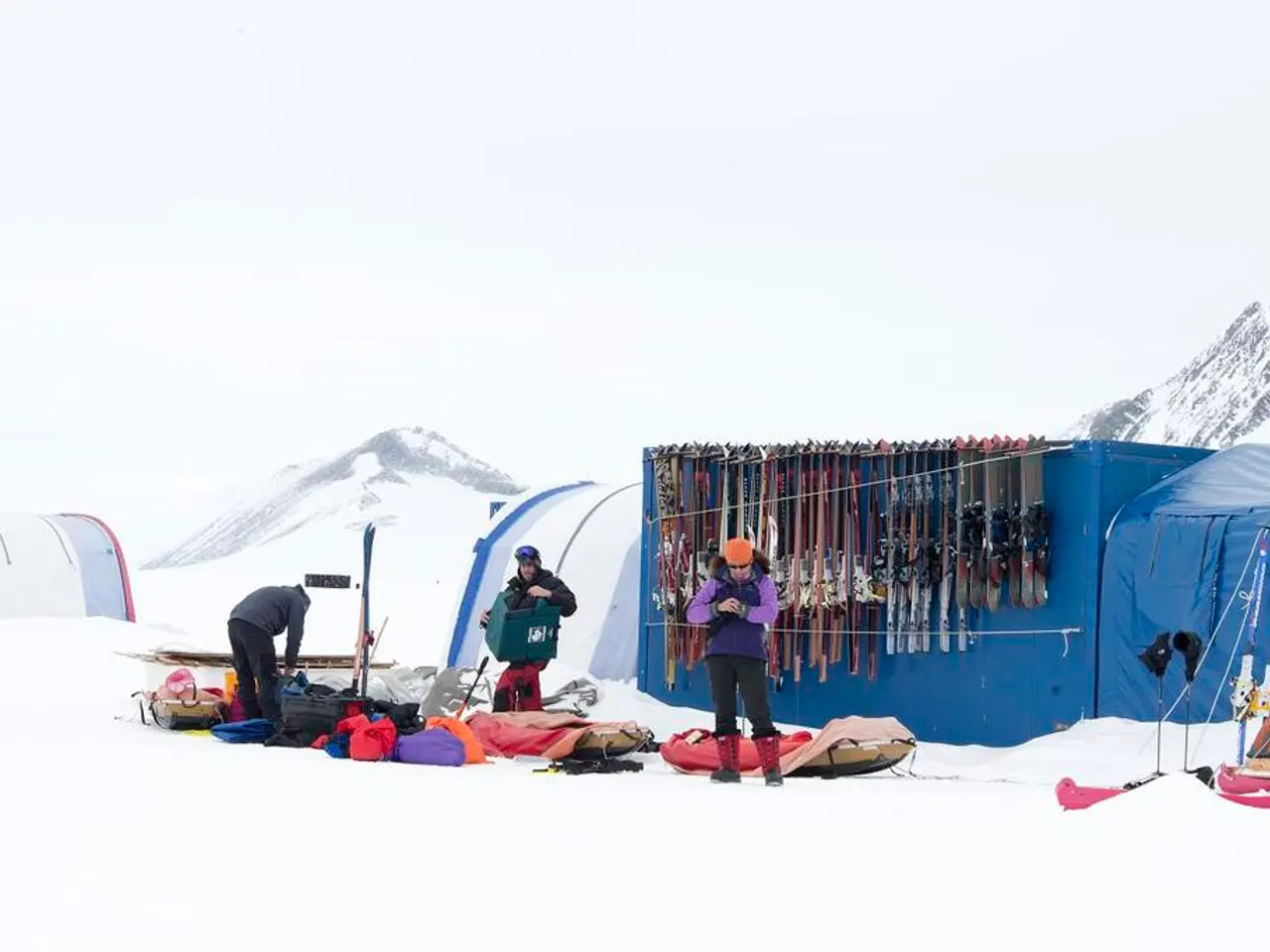Giant rift forms in Greenland's glacier, sending waves into the sea
The Alfred Wegener Institute (AWI) in Bremerhaven has reported that Greenland's 79°N Glacier is showing early signs of instability due to the formation of a large meltwater lake on its surface, approximately 21 square kilometers in size.
This glacier, which is the longest in Greenland, extending over a length of about 80 kilometers, has been undergoing significant changes. The lake, which has been growing since more and more meltwater accumulated on its surface, has caused seven abrupt drainage events, four of which occurred in the last five years.
These drainage events force large volumes of water from the lake through cracks that have openings several dozen meters wide, reaching the glacier's floating tongue and draining into the ocean. The presence and persistence of these deep fissures suggest irreversible changes in the glacier’s structure and a move toward increased instability.
Radar imaging has revealed that water beneath the glacier accumulates into a subglacial lake, causing uplift or a blister in the ice sheet. This dynamic of meltwater interaction with the ice is critical to understanding the glacier’s potential contribution to future sea-level rise.
The 79°N Glacier, which covers an entire elongated fjord, has triangular fracture fields that have been forming since 2019. These fracture fields form channels with openings several dozen meters wide, tearing deep cracks into the glacier. The outflowing water from the lake lifts the glacier, further impacting its stability.
Scientists are investigating the process that is causing these changes, but it is still unclear if the glacier can return to its former stable state. The AWI findings highlight the 79°N Glacier’s growing instability linked to explosive meltwater lake formation, drainage events, and the resulting formation of persistent and large-scale ice fractures, all of which are early warning signs of possible accelerated ice loss in northern Greenland.
References:
[1] Alfred Wegener Institute (2022). Meltwater lake on 79°N Glacier in Greenland. Retrieved from www.awi.de/en/awi/home/research/polar-and-marine-research/polar-research-vessels/polarstern/expeditions/previous-expeditions/ms-polarstern-2019/science/meltwater-lake-on-79-n-glacier-in-greenland
[2] Mouginot, J., Rignot, E., Scheuchl, B., & Fenty, I. (2014). Melt-induced fast flow of the 79°N Glacier tongue, north Greenland. Geophysical Research Letters, 41(13), 4526–4531.
[3] Box, J. E., Cogley, J. G., Kaser, G., & Kienholz, C. (2012). Changes in glacier length by deglaciation during the 21st century. The Cryosphere, 6(6), 1131–1149.
[4] Van Angelen, J. H., Van den Broeke, M. R., and Van de Wal, R. S. W. (2015). The role of subglacial lakes in the dynamical response of the Greenland Ice Sheet. Journal of Glaciology, 61(223), 819-832.
- In light of the Alfred Wegener Institute's findings, a community policy concerning the environmental implications of climate change, especially the potential impact on health and wellness due to rising sea levels, might be considered necessary.
- Vocational training programs focusing on environmental science could potentially prepare individuals to contribute effectively to the study and mitigation of climate change phenomena such as the melting of Greenland's 79°N Glacier.
- As medical-conditions related to climate change become more prevalent, it is crucial for health-and-wellness professionals to be well-versed in the latest advancements in environmental science to better understand and address the health impacts of climate change, such as the potential effects of melting glaciers on sea levels.




